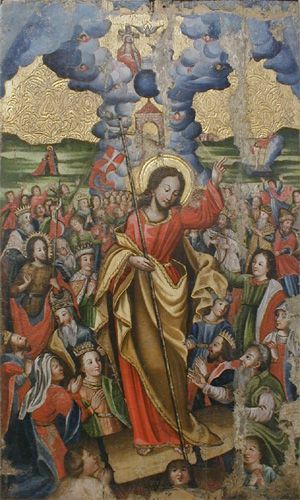Eastertide
Cycle (graph theory)
In graph theory, a cycle is a path of edges and vertices wherein a vertex is reachable from itself by traversing the edges in a sequence such that the first and last vertices are the same, and no edge is repeated. This concept is fundamental in the study of graph theory, a branch of mathematics that deals with problems related to the modeling of pairwise relations between objects.
A cycle can be defined more formally as a sequence of vertices \(v_1, v_2, ..., v_k\) with \(k \geq 3\), where \(v_1 = v_k\), and for all \(1 \leq i < k\), the pair \(v_i, v_i+1\) is an edge, and all \(v_i\) are distinct except for \(v_1\) and \(v_k\). Cycles are a key area of study due to their applications in various fields such as computer science, network analysis, and algorithm design.
Cycles can be categorized into several types based on the characteristics of the graph. In a directed graph, a cycle that follows the direction of the edges is called a directed cycle, while in an undirected graph, the cycle is simply a closed loop. Another important distinction is between simple cycles, where no vertices are repeated except for the beginning and end, and non-simple cycles, which may visit the same vertex more than once.
The detection of cycles in a graph is a significant problem in graph theory, with implications for algorithm design and network analysis. Algorithms such as Depth-First Search (DFS) and Breadth-First Search (BFS) are commonly used to detect cycles in graphs.
Eastertide
Eastertide is the period in the Christian liturgical calendar that begins on Easter Sunday and lasts until the day of Pentecost, seven weeks later. It is a time of celebration for Christians around the world, commemorating the resurrection of Jesus Christ from the dead, which is considered the cornerstone of Christian faith.
The season of Eastertide is marked by joy and triumph, reflecting the victory of life over death and light over darkness. During this period, the liturgical color is often white, symbolizing purity and joy. Eastertide is characterized by specific liturgical practices, including the singing of Easter hymns, special prayers, and the reading of scriptural passages that recount the post-resurrection appearances of Jesus to his disciples.
One of the key features of Eastertide is the emphasis on the Great Commission, where the resurrected Jesus instructs his followers to spread his teachings to all nations. This period also leads up to the celebration of Ascension Day, which commemorates Jesus's ascension into heaven, and ultimately culminates in Pentecost, celebrating the descent of the Holy Spirit upon the apostles and other followers of Jesus.
Eastertide is not only a time for liturgical observance but also serves as a period for reflection on the implications of the resurrection for Christian life and faith. It encourages believers to renew their commitment to living according to the teachings of Jesus, emphasizing themes of rebirth, renewal, and transformation.
Search WikiMD
Ad.Tired of being Overweight? Try W8MD's physician weight loss program.
Semaglutide (Ozempic / Wegovy and Tirzepatide (Mounjaro / Zepbound) available.
Advertise on WikiMD
|
WikiMD's Wellness Encyclopedia |
| Let Food Be Thy Medicine Medicine Thy Food - Hippocrates |
Translate this page: - East Asian
中文,
日本,
한국어,
South Asian
हिन्दी,
தமிழ்,
తెలుగు,
Urdu,
ಕನ್ನಡ,
Southeast Asian
Indonesian,
Vietnamese,
Thai,
မြန်မာဘာသာ,
বাংলা
European
español,
Deutsch,
français,
Greek,
português do Brasil,
polski,
română,
русский,
Nederlands,
norsk,
svenska,
suomi,
Italian
Middle Eastern & African
عربى,
Turkish,
Persian,
Hebrew,
Afrikaans,
isiZulu,
Kiswahili,
Other
Bulgarian,
Hungarian,
Czech,
Swedish,
മലയാളം,
मराठी,
ਪੰਜਾਬੀ,
ગુજરાતી,
Portuguese,
Ukrainian
Medical Disclaimer: WikiMD is not a substitute for professional medical advice. The information on WikiMD is provided as an information resource only, may be incorrect, outdated or misleading, and is not to be used or relied on for any diagnostic or treatment purposes. Please consult your health care provider before making any healthcare decisions or for guidance about a specific medical condition. WikiMD expressly disclaims responsibility, and shall have no liability, for any damages, loss, injury, or liability whatsoever suffered as a result of your reliance on the information contained in this site. By visiting this site you agree to the foregoing terms and conditions, which may from time to time be changed or supplemented by WikiMD. If you do not agree to the foregoing terms and conditions, you should not enter or use this site. See full disclaimer.
Credits:Most images are courtesy of Wikimedia commons, and templates, categories Wikipedia, licensed under CC BY SA or similar.
Contributors: Prab R. Tumpati, MD



